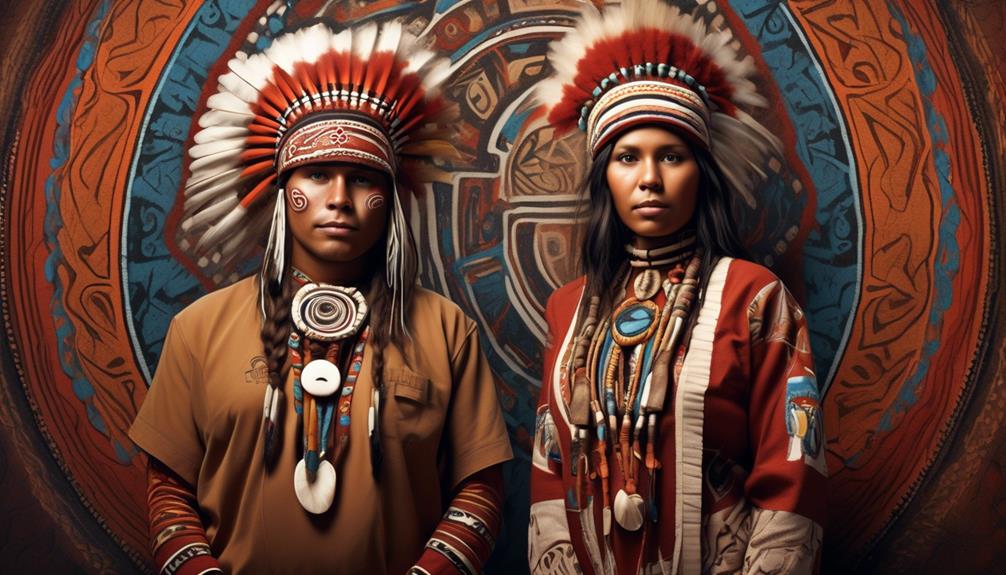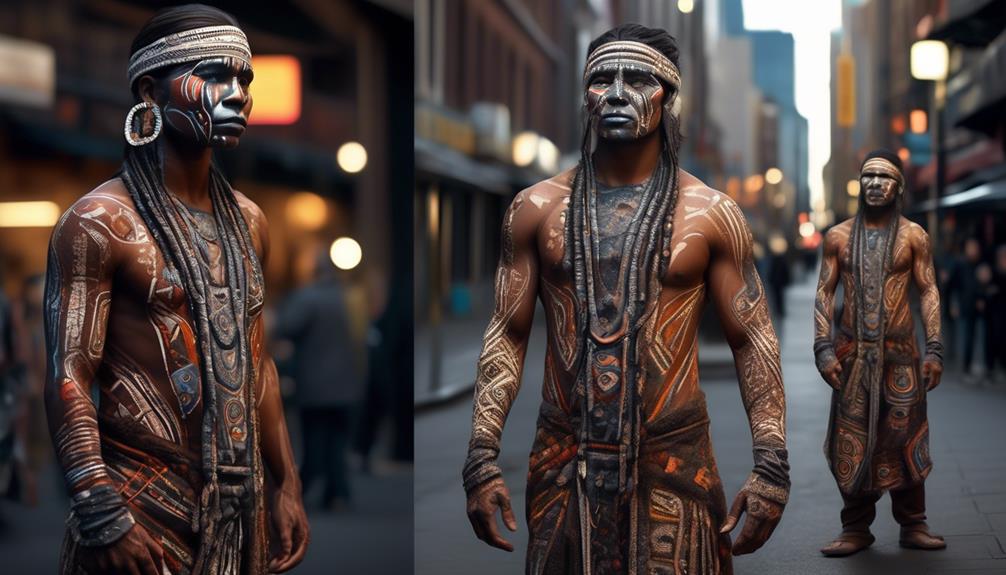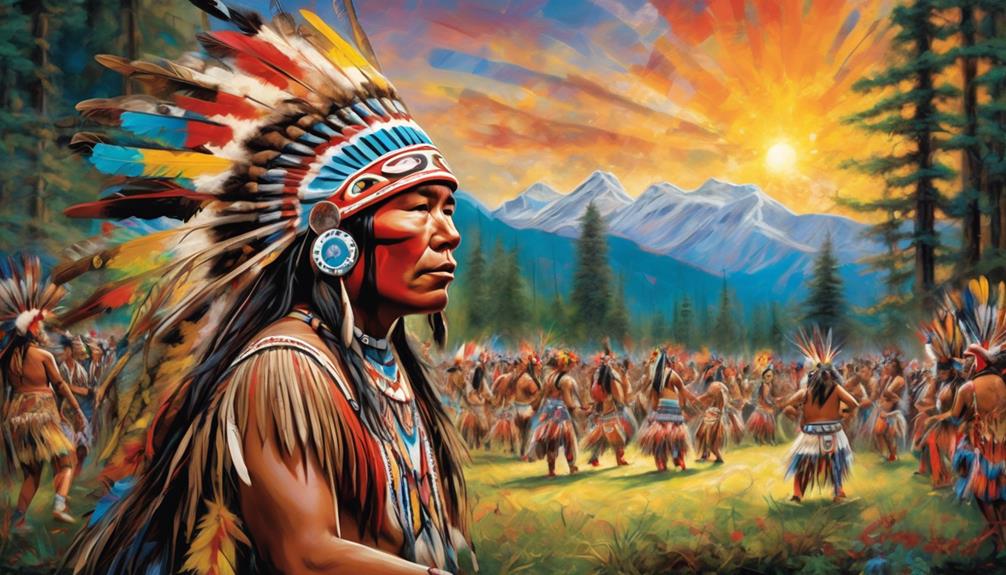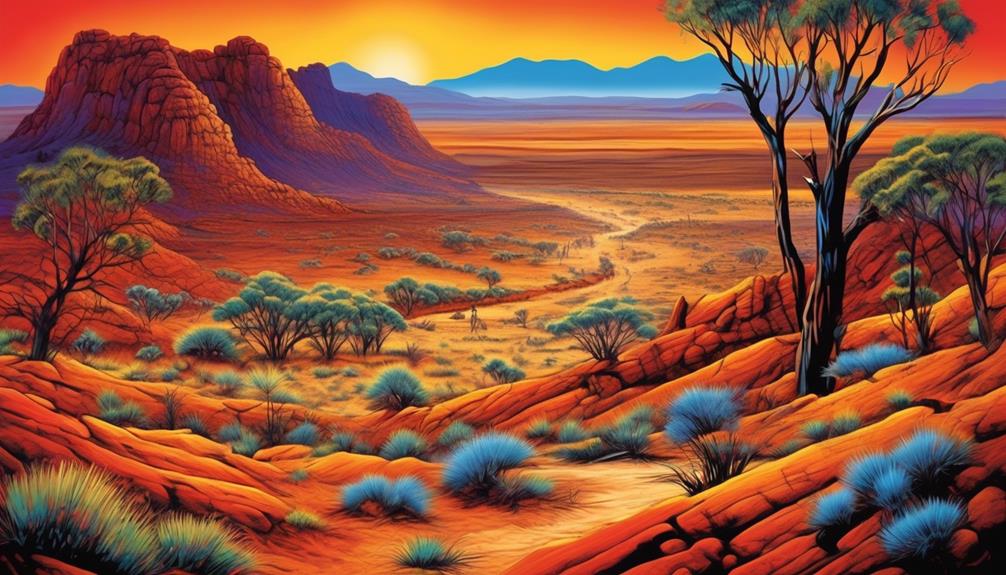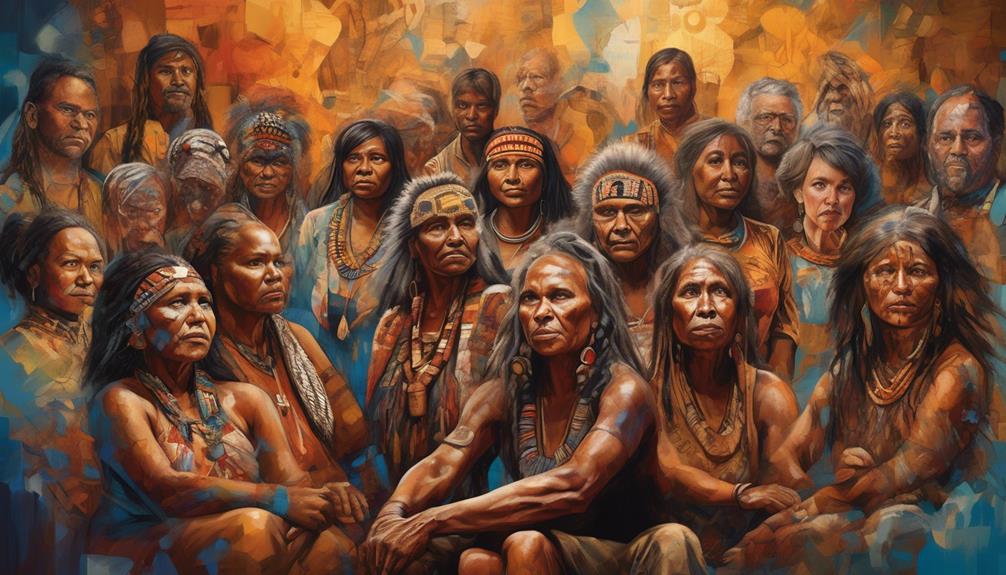An age-old saying asserts, “A rose by any other name would smell as sweet.” Yet, the debate over the terms ‘Aboriginal’ and ‘Indigenous’ is far from simple.
The nuances of these labels hold immense significance, reflecting historical, legal, and cultural complexities.
As we navigate through this discussion, we'll unravel the layers of meaning behind these terms, exploring their global implications and contemporary usage.
Join us as we embark on a journey to understand the power of language in reclaiming identity and shaping the future.
Key Takeaways
- The terms 'Aboriginal' and 'Indigenous' have different historical origins and legal definitions, with 'Aboriginal' being specific to countries like Australia and Canada, and 'Indigenous' being a more global term used in international law.
- Both terms highlight the cultural diversity within native communities and emphasize the importance of cultural preservation and language revitalization.
- The lasting effects of colonization, including displacement and the loss of traditional knowledge, have had a profound impact on indigenous populations.
- The enduring legacy of historical displacement has resulted in intergenerational trauma, government policies aimed at assimilation, and the prohibition of traditional languages and cultural practices.
Historical Origins
The historical origins of the terms 'Aboriginal' and 'Indigenous' can be traced back to the colonization of various regions around the world. These terms have deep historical significance and are tied to the cultural identities of native peoples.
The term 'Aboriginal' is commonly used in Australia and Canada to refer to the original inhabitants of the land. It encompasses the diverse cultures, languages, and traditions of the first peoples.
On the other hand, the term 'Indigenous' has been widely adopted globally to describe the original inhabitants of a particular region, encompassing Native American, First Nations, Maori, and other native groups.
The historical origins of these terms are rooted in the colonial encounters between European settlers and the native peoples of the lands they colonized. As colonization spread across the world, these terms were used to differentiate the colonizers from the original inhabitants, often carrying with them a complex history of oppression, marginalization, and resistance.
The cultural significance of these terms can't be understated, as they're intricately linked to the identity, heritage, and rights of indigenous communities. They represent a reclaiming of cultural heritage and a means of asserting the presence and significance of indigenous peoples in the face of colonialism and its lasting effects.
Understanding the historical origins and cultural significance of these terms is essential in acknowledging the legacy of colonialism and working towards a future of equality, respect, and empowerment for indigenous peoples worldwide.
Legal Definitions

Let's take a closer look at the legal definitions of 'Aboriginal' and 'Indigenous' and the distinctions between the two terms.
Understanding the legal implications and historical context of these terms is crucial in recognizing the rights and status of Indigenous peoples within the legal framework of various countries.
We'll also consider the cultural implications of these legal definitions and how they impact the identity and rights of Indigenous communities.
Legal Distinctions Explained
Understanding the legal distinctions between the terms 'Aboriginal' and 'Indigenous' is vital for navigating the complexities of indigenous rights and legal frameworks.
In many legal contexts, the term 'Aboriginal' is used in specific countries such as Australia and Canada to refer to the original inhabitants before colonization.
On the other hand, 'Indigenous' is a more global and inclusive term used in international law and human rights instruments to encompass the original peoples of different regions.
The legal implications of these terms are significant as they can impact the recognition of land rights, self-governance, and access to resources.
Moreover, the cultural significance of these terms can't be overlooked, as they're deeply tied to the historical and ongoing struggles for indigenous rights and sovereignty.
It's crucial to approach these distinctions with sensitivity and awareness of the diverse legal and cultural contexts in which they're employed.
Cultural Implications Considered
When considering the cultural implications of legal definitions for 'Aboriginal' and 'Indigenous', it's important to recognize the nuanced and diverse perspectives within indigenous communities and the broader legal framework.
Cultural preservation and language revitalization are central to the discussions around legal definitions. Community engagement is crucial in ensuring that the legal framework respects and supports the traditional knowledge and practices of indigenous peoples.
Efforts to preserve and revitalize indigenous languages are vital in maintaining cultural identity and transmitting traditional knowledge to future generations. Legal definitions should acknowledge the cultural significance of these terms and reflect the self-identification and aspirations of indigenous communities.
It's imperative to approach these discussions with respect, sensitivity, and a genuine commitment to understanding the cultural implications of legal definitions for 'Aboriginal' and 'Indigenous'.
Cultural Connotations
The distinction between the terms 'Aboriginal' and 'Indigenous' carries significant cultural connotations that reflect the diverse histories and traditions of native communities. Both terms encompass a wide range of cultural identities, each with its own unique set of values and practices. When considering these terms, it's important to recognize the depth of cultural exchange and the ongoing efforts towards language preservation within these communities.
- Cultural Exchange: The term 'Indigenous' often conveys a broader, more inclusive sense of identity, reflecting the interconnectedness of different native cultures. It acknowledges the historical and ongoing exchange of knowledge, traditions, and practices between various Indigenous communities, fostering a sense of unity and solidarity.
- Language Preservation: Language holds immense cultural significance for Indigenous communities. The term 'Aboriginal' is closely tied to the preservation and revitalization of specific Indigenous languages, which are integral to maintaining cultural heritage and identity. Language preservation efforts play a vital role in safeguarding traditional knowledge and ancestral connections.
- Cultural Diversity: Both 'Aboriginal' and 'Indigenous' highlight the rich tapestry of cultural diversity within native communities. These terms encompass a broad spectrum of traditions, beliefs, and customs, emphasizing the multifaceted nature of Indigenous cultures and histories.
Understanding the cultural connotations of these terms is essential for promoting respect and recognition of the diverse identities and experiences within Indigenous communities. It also underscores the importance of embracing cultural exchange and supporting language preservation initiatives as integral components of Indigenous liberation.
Terminology Debate

The cultural connotations associated with the terms 'Aboriginal' and 'Indigenous' lay the foundation for an ongoing debate over the most appropriate and respectful terminology to use when referring to native communities. This terminology debate is a reflection of the evolving language and the need for cultural sensitivity.
The perspectives within the community are diverse and essential to consider when addressing this issue.
The terminology debate surrounding 'Aboriginal' versus 'Indigenous' is rooted in the desire for respect and acknowledgment of the rich cultural heritage of native communities. Language evolves over time, and the terms used to describe indigenous peoples are no exception. The shift from 'Aboriginal' to 'Indigenous' signifies a growing awareness of the need for more respectful and inclusive language. However, it's important to recognize that the preferences for terminologies may differ among indigenous groups and individuals. Some may identify strongly with 'Aboriginal' due to historical and cultural reasons, while others may prefer 'Indigenous' for its broader and more inclusive connotations.
Community perspectives play a crucial role in this ongoing debate. It's essential to listen to the voices of indigenous peoples and consider their preferences when addressing them. As language continues to evolve, it's important to engage in respectful conversations and remain open to embracing terminologies that align with the values and preferences of the diverse indigenous communities.
This debate underscores the significance of cultural sensitivity and the need to approach terminology with respect and awareness.
Global Perspectives
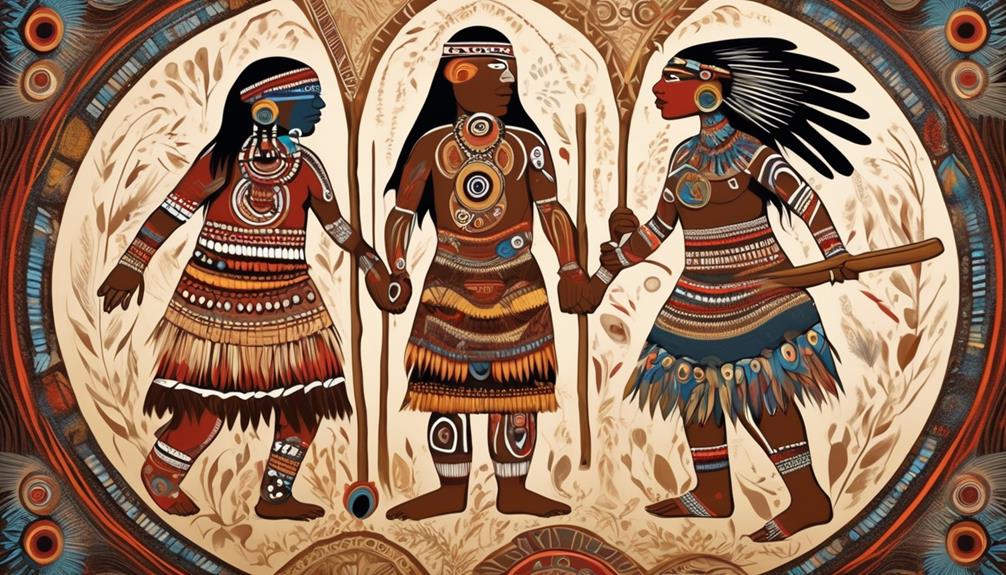
Globally, different regions and countries have varying perspectives on the terminology used to refer to native communities, reflecting the diversity and complexity of indigenous identities and experiences. This diversity of perspectives is influenced by historical, cultural, and political factors, shaping the ways in which indigenous peoples are understood and represented worldwide.
- Historical Context: The historical impact of colonization has shaped the perspectives of many countries and communities. The terminology used to refer to indigenous peoples often reflects the colonial history and its lingering effects on cultural identity and recognition.
- Cultural Diversity: The global perspectives on indigenous terminology also highlight the rich cultural diversity within and among native communities. Different regions have distinct languages, traditions, and ways of life, contributing to a wide array of perspectives and preferences regarding the terminology used to describe their identities.
- Cultural Preservation: Many perspectives on indigenous terminology are rooted in the ongoing efforts to preserve and promote indigenous cultures. The terminology used is often seen as a crucial aspect of cultural preservation and recognition, influencing the way indigenous communities are perceived and supported on a global scale.
Understanding these global perspectives is essential for fostering respectful and inclusive dialogue about indigenous identities. It highlights the need to recognize and honor the diverse experiences and viewpoints of indigenous peoples worldwide.
Colonial Legacy
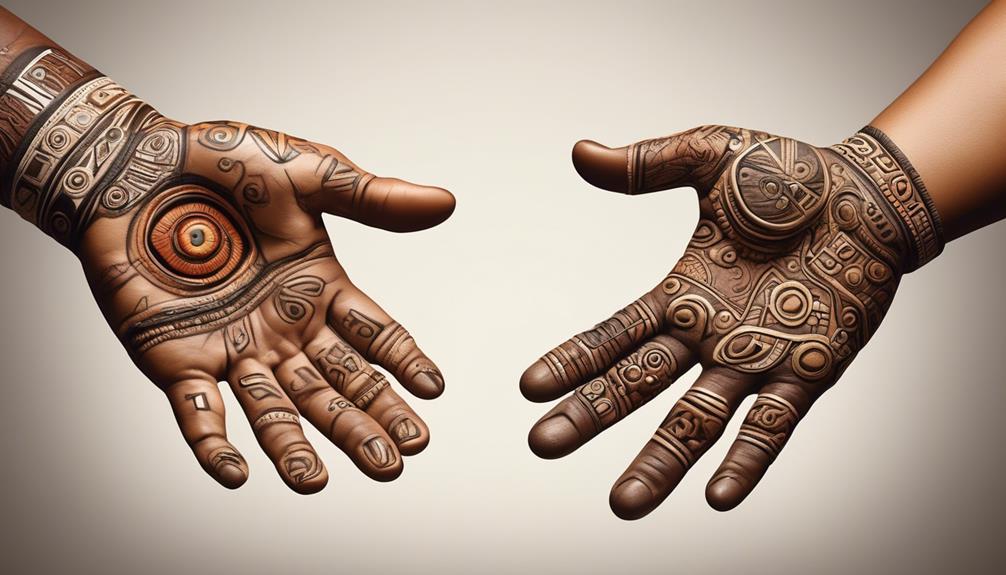
As we consider the colonial legacy, we must examine the historical displacement impact.
The legacy of colonization has had lasting effects on Indigenous communities around the world, shaping their experiences and challenges.
Understanding these points is crucial for recognizing the ongoing impact of colonialism.
We must also consider the effects of cultural assimilation and the consequences of intergenerational trauma.
Working towards healing and reconciliation requires a comprehensive understanding of these complex issues.
Historical Displacement Impact
When European colonizers arrived, our ancestors experienced profound displacement, which continues to impact Indigenous communities to this day. The displacement effects of colonialism have left a lasting imprint on our cultures, identities, and ways of life. This historical trauma has shaped our experiences and continues to influence our socio-economic and political realities.
The impact of displacement has led to the erosion of traditional knowledge and practices, loss of ancestral lands, and disrupted community structures. Furthermore, it has contributed to ongoing social and health disparities within Indigenous populations.
Despite these challenges, Indigenous communities persist in reclaiming their heritage, revitalizing cultural practices, and advocating for their rights. The historical displacement impact remains a critical aspect of understanding the complexities of Indigenous experiences and resilience.
Cultural Assimilation Effects
The enduring legacy of historical displacement has had a profound impact on Indigenous communities, shaping their experiences and contributing to the cultural assimilation effects that persist as a result of colonialism.
Intergenerational trauma, stemming from the systematic disruption of Indigenous cultural practices and family structures, continues to affect Indigenous communities today.
Government intervention, often aimed at assimilating Indigenous peoples into the dominant culture, has further exacerbated these effects. This intervention has included policies such as the forced removal of Indigenous children from their families, the prohibition of traditional languages and cultural practices, and the imposition of Western education.
As a result, many Indigenous communities continue to grapple with the lasting effects of cultural assimilation, striving to reclaim and preserve their cultural heritage while addressing the deep-seated trauma caused by historical displacement and government actions.
Intergenerational Trauma Consequences
Experiencing the enduring effects of historical displacement, Indigenous communities continue to grapple with the intergenerational trauma consequences stemming from colonial legacy. The impact of this trauma is profound and pervasive, affecting mental, emotional, and physical well-being across generations.
- Healing Process: Engaging in culturally relevant healing practices is essential for addressing intergenerational trauma.
- Intergenerational Healing: Fostering connections between generations is crucial in the journey towards healing and recovery from trauma.
- Cultural Resilience: Upholding and revitalizing cultural traditions and knowledge systems plays a pivotal role in fostering resilience and mitigating the effects of intergenerational trauma.
It is important to acknowledge the significance of ongoing trauma recovery efforts within Indigenous communities and to support initiatives that prioritize intergenerational healing and cultural resilience.
Self-Identification

As individuals from various indigenous communities, we each hold the right to self-identify according to our cultural heritage and personal experiences. Self-identification challenges can arise when our identity doesn't neatly fit into predefined categories, especially in official documentation. This can lead to feelings of erasure and invisibility, undermining our sense of belonging and connection to our heritage. Intersectionality considerations are crucial in self-identification, as they acknowledge the multiple layers of our identity, including race, gender, class, and sexuality. These aspects intersect and influence each other, shaping our experiences and perspectives as indigenous peoples.
To illustrate the diverse ways in which we self-identify, here is a table showcasing some of the factors that individuals consider when identifying with their indigenous heritage:
| Factors to Consider | Personal Reflections |
|---|---|
| Cultural Traditions | Connection to language, ceremonies, and customs |
| Family Heritage | Ancestral lineage and familial ties to the community |
| Lived Experiences | Encounters with discrimination and cultural pride |
| Community Recognition | Acceptance and inclusion within the indigenous community |
Each of these factors plays a significant role in our self-identification. It is important to recognize and respect the diverse ways in which individuals from indigenous communities define their identity. By acknowledging the complexities of self-identification and embracing intersectionality considerations, we can foster an environment that honors and validates the richness of our indigenous identities.
Government Policies

Navigating the complexities of self-identification within indigenous communities often intersects with government policies that impact our rights and recognition. Government intervention has historically played a significant role in shaping the lives of indigenous peoples.
Here are a few key points to consider:
- Land Rights: Government policies have often dictated the allocation and ownership of land, leading to displacement and loss of traditional territories for indigenous communities. The impact of these policies continues to be felt today, affecting cultural practices and economic autonomy.
- Cultural Preservation: Government intervention has influenced the preservation and revitalization of indigenous languages, customs, and traditions. While some policies have aimed to support cultural preservation, others have sought to assimilate indigenous peoples into the dominant culture, resulting in the erosion of traditional practices.
- Political Representation: Government policies have shaped the participation of indigenous peoples in the political arena. Efforts to increase indigenous representation in decision-making processes and governance structures have been influenced by various policies, impacting the ability of indigenous communities to advocate for their rights and interests.
It is crucial to critically examine the ways in which government policies have impacted indigenous communities. By understanding the historical and contemporary effects of government intervention, we can work towards advocating for policies that uphold the rights, autonomy, and self-determination of indigenous peoples.
Representation in Media
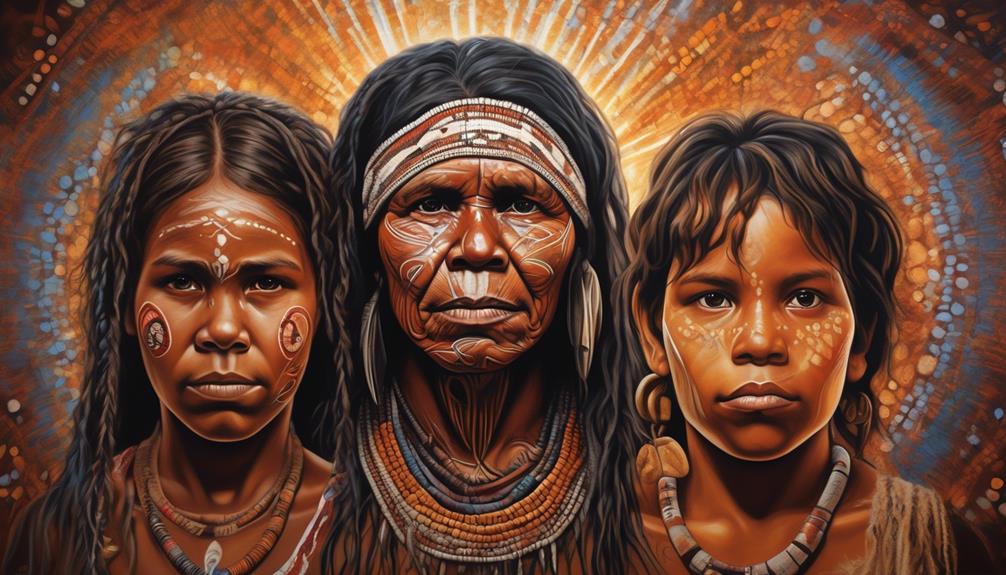
When it comes to representation in media, it's important to address the prevalence of stereotypes and cultural appropriation.
These issues have a significant impact on how Indigenous peoples are perceived and understood by the wider population.
Stereotypes in Media
Media often perpetuates stereotypes of Aboriginal and Indigenous people, shaping public perceptions and influencing societal attitudes towards these communities. It's essential to recognize the harmful impact of these portrayals and work towards more accurate and respectful representation in media.
- Overgeneralization: Many media outlets tend to portray Aboriginal and Indigenous peoples as a monolithic group, overlooking their diversity and unique cultural identities.
- Negative framing: Media often focuses on negative aspects such as poverty, substance abuse, and crime within these communities, reinforcing damaging stereotypes.
- Lack of representation: Indigenous voices are frequently underrepresented in mainstream media, leading to a limited understanding of their perspectives and experiences.
It is crucial for media organizations to actively challenge these harmful stereotypes and offer a more balanced and authentic portrayal of Aboriginal and Indigenous communities.
Cultural Appropriation
In our examination of representation in media, particularly regarding Aboriginal and Indigenous communities, it's imperative to address the issue of cultural appropriation within this context. Cultural appropriation occurs when elements of a culture are adopted by another culture without proper understanding, acknowledgment, or respect.
In the context of media representation, cultural appreciation and respectful representation are essential. It's crucial for media to portray diverse Indigenous cultures with accuracy and sensitivity, avoiding harmful stereotypes and caricatures. When creators seek to incorporate Indigenous cultural elements in their work, they should do so with a deep respect for the traditions and meanings behind them.
This involves consulting with Indigenous communities and individuals to ensure accurate and respectful representation. By fostering cultural appreciation and respectful representation, media can contribute to a more inclusive and equitable society.
Indigenous Rights
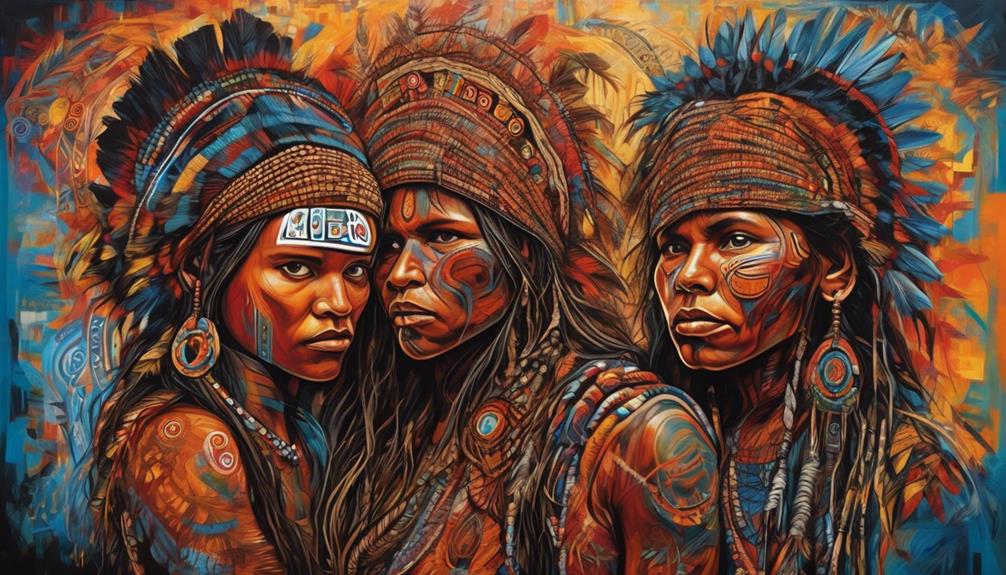
Indigenous communities have long been advocating for their rights to be recognized and respected. This ongoing struggle has been centered around key issues such as land rights, cultural preservation, and treaty rights.
- Land rights: Indigenous activism is deeply rooted in the fight for land rights. This includes not only the recognition of traditional lands but also the protection of these areas from exploitation and environmental degradation. Land rights are essential for the preservation of Indigenous cultures and ways of life.
- Cultural preservation: Indigenous communities have been working tirelessly to ensure the preservation of their unique cultures, languages, and traditions. This includes the protection of sacred sites, the revitalization of traditional knowledge, and the promotion of cultural practices within their communities and beyond.
- Treaty rights: Many Indigenous communities have treaties with governments that outline specific rights and agreements. Ensuring that these treaty rights are upheld is a critical component of Indigenous activism, as it directly impacts the autonomy and self-governance of Indigenous peoples.
The recognition and protection of these rights are fundamental to the liberation and empowerment of Indigenous communities. It's imperative for all individuals and institutions to support these efforts and advocate for the full realization of Indigenous rights.
Academic Discourse

Advocating for the inclusion of Indigenous perspectives and knowledge within academic discourse is crucial for promoting diversity and enriching scholarly conversations. In academia, the incorporation of Indigenous voices fosters a more comprehensive understanding of various subjects and challenges the dominant narratives that have historically marginalized Indigenous cultures. It is imperative that academic discourse reflects a wide range of cultural connotations to provide a more holistic and accurate representation of knowledge.
To illustrate the significance of integrating Indigenous perspectives into academic discourse, we can examine the following table:
| Benefits of Inclusive Academic Discourse | Challenges in Implementing Inclusive Academic Discourse | Strategies for Overcoming Challenges |
|---|---|---|
| Promotes diverse perspectives | Resistance to change within academic institutions | Establishing partnerships with Indigenous communities |
| Enriches scholarly conversations | Limited resources for supporting Indigenous knowledge | Providing training on culturally sensitive approaches |
| Challenges existing power dynamics | Lack of awareness among academic peers | Encouraging interdisciplinary collaboration |
| Fosters more comprehensive understanding | Potential for tokenization of Indigenous voices | Creating accountability measures for equitable representation |
This table highlights the multifaceted nature of integrating Indigenous perspectives into academic discourse. It acknowledges the benefits, challenges, and potential strategies for creating a more inclusive academic environment. By addressing these aspects, we can work towards a scholarly community that embraces diverse cultural connotations and promotes liberation for all knowledge systems.
Contemporary Usage
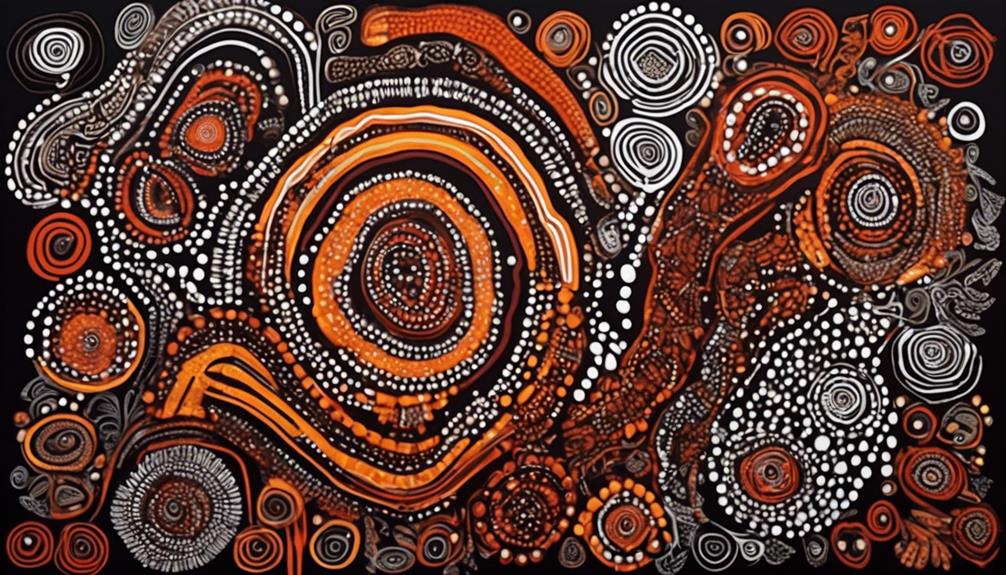
Contemporary usage of Aboriginal and Indigenous terminology reflects the evolving language and societal perspectives regarding native cultures. In today's context, the terms Aboriginal and Indigenous are used interchangeably, but the choice of terminology can hold different meanings and implications based on contemporary perspectives and cultural sensitivity.
- Self-identification: Many indigenous communities and individuals prefer to self-identify using specific tribal or national names, recognizing the diversity and uniqueness of their cultures. This reflects the contemporary perspective of honoring individual and collective identities.
- Legal and political contexts: In legal and political realms, the term Indigenous is often favored due to its international recognition and usage in legal documents such as the United Nations Declaration on the Rights of Indigenous Peoples. This demonstrates the contemporary perspective of aligning with global standards and frameworks for indigenous rights and representation.
- Cultural sensitivity: The choice between Aboriginal and Indigenous can also be influenced by cultural sensitivity and historical contexts. Some individuals and communities may feel connected to the term Aboriginal, while others may associate it with colonial legacies. This highlights the importance of understanding the cultural nuances and sensitivities associated with these terms.
Reclaiming Identity
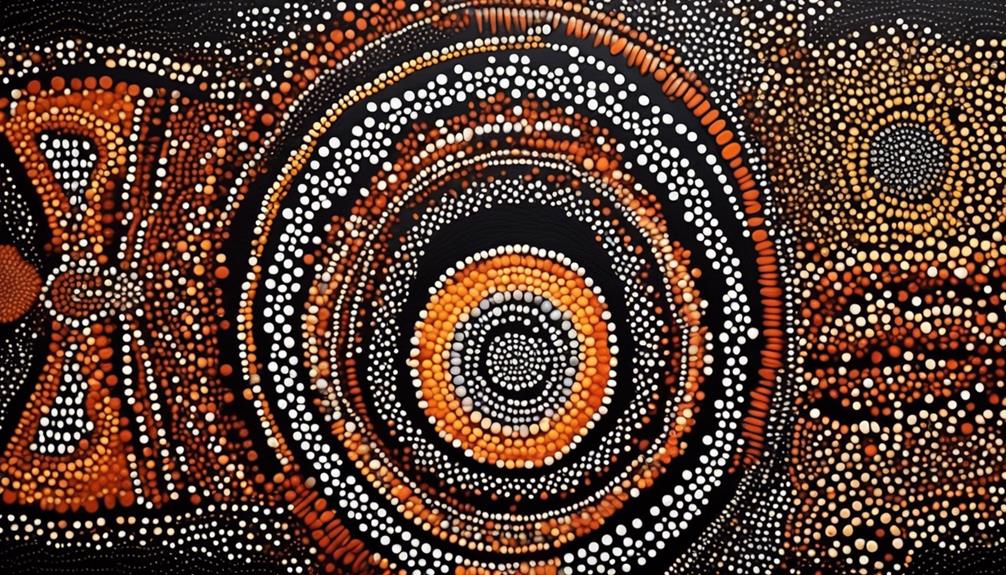
We are at a critical juncture in the ongoing conversation about reclaiming identity for Indigenous communities.
As we examine the ways in which cultural heritage reclamation is taking place, it's important to consider the representation of Indigenous identities in media.
These discussions are essential for understanding the complexities of reclaiming identity and the impact it has on Indigenous communities.
Cultural Heritage Reclamation
Indigenous communities across the world are reclaiming their cultural heritage as a means of asserting their identity and preserving their traditions. This cultural revival is essential for the continuation of our rich and diverse heritage.
Here are some key aspects of cultural heritage reclamation:
- Language Revitalization: Many Indigenous communities are working tirelessly to revive and preserve their ancestral languages, recognizing the pivotal role language plays in cultural preservation.
- Traditional Knowledge Transmission: Efforts are being made to ensure that traditional knowledge, including medicinal practices, storytelling, and craftsmanship, is passed down to future generations.
- Cultural Practices Restoration: There's a renewed focus on reviving and practicing traditional ceremonies, dances, and rituals, contributing to the preservation of cultural identity and heritage.
Cultural heritage reclamation is a powerful tool for asserting our identities and ensuring the survival of our traditions.
Identity Representation in Media
Reclaiming cultural heritage through practices like language revitalization, traditional knowledge transmission, and cultural practices restoration has also led to a growing emphasis on the representation of our identities in media.
Media plays a crucial role in shaping societal perceptions and attitudes towards Indigenous peoples. Stereotype portrayal and misrepresentation in media have perpetuated harmful misconceptions about our identities, contributing to cultural misappropriation. However, there's a growing movement to reclaim our narrative and challenge these misrepresentations.
Indigenous creators are using various forms of media to authentically portray our diverse identities, traditions, and contemporary experiences. This shift is crucial in dismantling harmful stereotypes and empowering Indigenous communities.
Intersectionality
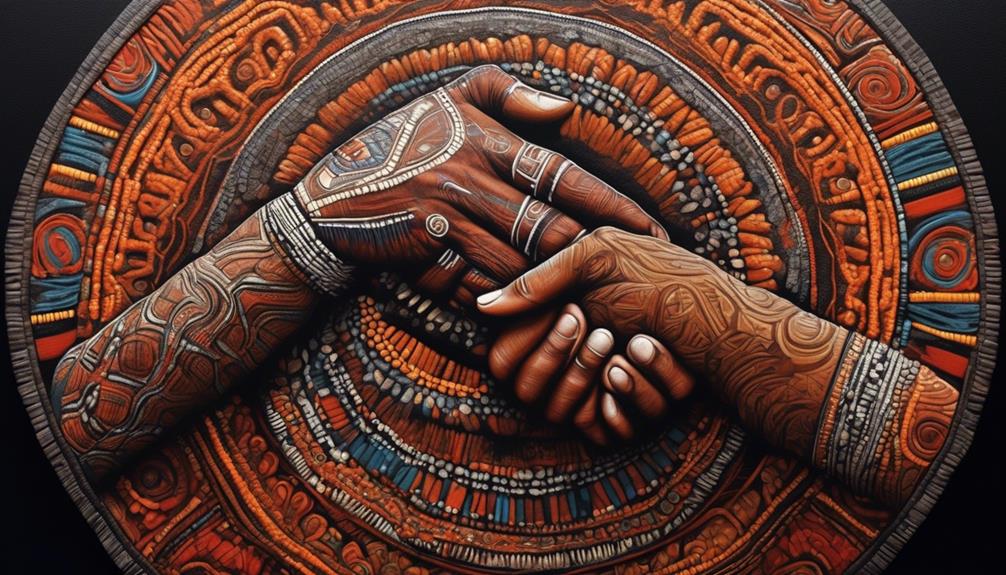
Examining the interconnected experiences of oppression and discrimination faced by Aboriginal and Indigenous communities is essential for understanding the concept of intersectionality. Intersectionality acknowledges that individuals may face multiple forms of oppression based on their intersecting identities, such as race, gender, class, and sexuality. In the context of Aboriginal and Indigenous communities, intersectionality is crucial for comprehending the complex and overlapping challenges they encounter.
- Multiple Forms of Discrimination: Aboriginal and Indigenous individuals often experience discrimination not only based on their ethnicity but also due to other aspects of their identity, such as gender or sexual orientation. This intersectional discrimination can exacerbate their marginalization within society.
- Access to Resources and Opportunities: Intersectionality sheds light on how the compounded effects of discrimination can restrict access to education, healthcare, employment, and other resources for Aboriginal and Indigenous people. This understanding is vital for crafting inclusive policies and interventions.
- Empowerment and Advocacy: Recognizing the intersecting forms of oppression faced by Aboriginal and Indigenous communities is a crucial step towards meaningful social justice. It enables us to advocate for their rights in a more holistic and effective manner, addressing the multifaceted nature of their experiences.
Understanding intersectionality within the context of marginalized communities like Aboriginal and Indigenous peoples is essential for fostering inclusivity and equity. It allows us to address the interconnected layers of discrimination and work towards dismantling systemic barriers that hinder their liberation.
Moving Forward
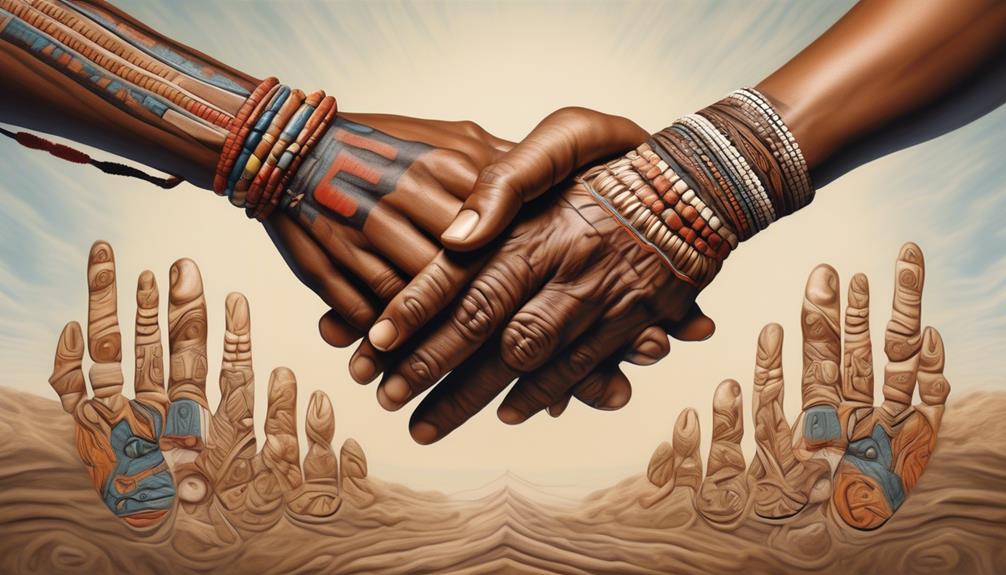
Analyzing strategies for progress and empowerment is essential for the advancement of Aboriginal and Indigenous communities. Moving forward, it's crucial to prioritize cultural preservation while addressing identity politics and advocating for social justice. To achieve progress, it's imperative to recognize and honor the diverse cultural heritages within Aboriginal and Indigenous communities. This involves supporting initiatives that promote the preservation of languages, traditions, and customary practices. By valuing and safeguarding cultural identity, communities can strengthen their sense of belonging and resilience.
In addition to cultural preservation, addressing identity politics is paramount in moving forward. This requires acknowledging the complexities and nuances within and between Aboriginal and Indigenous groups. Embracing diversity and inclusivity while navigating various intersecting identities is crucial for fostering unity and solidarity. By actively engaging in dialogue and collaboration, communities can work towards a more equitable and inclusive future.
Furthermore, the pursuit of social justice is fundamental in propelling Aboriginal and Indigenous communities forward. This involves advocating for fair representation, access to resources, and opportunities for economic and educational advancement. By challenging systemic barriers and discrimination, communities can strive towards creating a more just and equitable society for current and future generations.
Frequently Asked Questions
How Do Aboriginal and Indigenous Communities Address Issues of Intersectionality Within Their Communities?
We address intersectionality challenges within our communities by fostering dialogue, amplifying diverse voices, and creating inclusive spaces for all members.
Community empowerment is central to our approach, as we work together to recognize and dismantle systemic barriers.
By acknowledging the interconnected nature of our identities and experiences, we strive to create a more equitable and supportive environment for all individuals.
This collaborative effort allows us to address complex issues and promote liberation for our community.
What Steps Are Being Taken to Move Forward and Reconcile the Colonial Legacy That Has Impacted Aboriginal and Indigenous Communities?
Moving forward, we're actively engaging in reconciliation efforts to address the colonial impact on our communities.
By acknowledging the historical injustices and working towards healing and understanding, we're taking important steps to move beyond the legacy of colonization.
Our focus on community intersectionality and addressing issues from a holistic perspective allows us to create a more inclusive and supportive environment for all members.
How Are Aboriginal and Indigenous Communities Reclaiming Their Identity in the Face of Ongoing Challenges and Discrimination?
We're seeing a powerful movement of identity reclamation and cultural resurgence within aboriginal and indigenous communities.
Despite ongoing challenges and discrimination, these communities are reclaiming their traditions, languages, and customs, fostering a renewed sense of pride and connection to their heritage.
Through art, education, and advocacy, they're asserting their presence and resilience, challenging stereotypes and promoting understanding and respect for their diverse cultures.
What Are Some of the Less Visible Ways in Which Government Policies Continue to Impact Aboriginal and Indigenous Communities?
How do government policies impact aboriginal and indigenous communities in less visible ways?
From community disempowerment to cultural erosion, policies shape our lives. Governance structures often fail to represent our diverse needs, perpetuating marginalization. Yet, our resilience and empowerment initiatives challenge these impacts.
We strive to preserve our cultures and traditions, resisting assimilation. By shedding light on these subtle impacts, we empower ourselves and our allies to advocate for equitable policies.
How Do Aboriginal and Indigenous Communities Navigate Representation in Mainstream Media and Advocate for More Accurate and Respectful Portrayals of Their Cultures and Experiences?
In navigating representation in mainstream media, communities employ advocacy strategies to promote accurate and respectful portrayals of their cultures and experiences. This involves engaging with media outlets, creating their own platforms, and collaborating with allies.
Community intersectionality and reconciliation efforts are central to identity reclamation and challenging harmful stereotypes.
It's also crucial to address the policy impact on media diversity and inclusion.
Conclusion
In conclusion, the debate between aboriginal and indigenous terminology is complex and rooted in historical, legal, and cultural connotations. While both terms are used globally, the reclaiming of identity and intersectionality are important factors to consider.
As we move forward, it's crucial to respect the preferences of different communities and acknowledge the anachronistic nature of the terminology debate. Ultimately, our goal should be to promote understanding and inclusivity for all indigenous peoples.
Talise is a talented writer and an expert in her field. Her unique perspective and insights enrich our content with depth and authenticity. With a wealth of knowledge and a strong connection to the subjects she writes about, Talise crafts engaging and informative articles that resonate with our readers. Her dedication to bringing Indigenous culture and wisdom to light is truly commendable.
